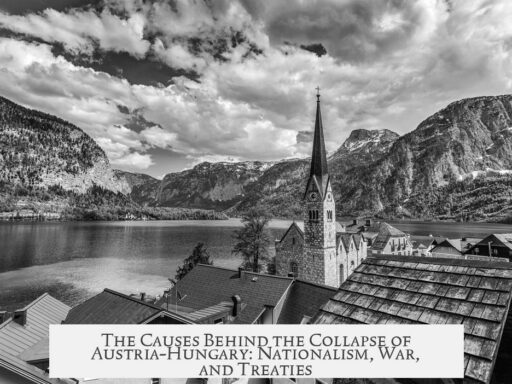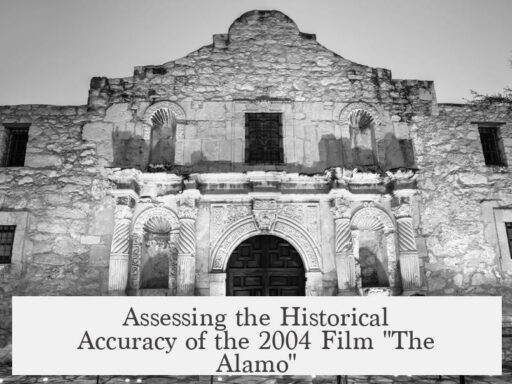Angkor Wat, located in modern-day Cambodia, expanded into a sprawling urban city covering over 1000 square kilometers. This vast size stemmed from the Khmer Empire’s advanced hydraulic system, which supported extensive agriculture and enabled a population over one million. Life in such a huge city remained vibrant and complex, shaped by trade, social structure, and monumental architecture.
Yasodharapura, often referred to as Angkor, served as the capital of the Khmer Empire. Its immense size reflects more than just the famous stone temples. The city was largely a ‘low-density urban sprawl’, with a network of canals, reservoirs, and agricultural fields surrounding the stone temple skeletons. The city’s layout was unique—residents might travel by canoe along the canals rather than only on foot, highlighting how walking from one side to another could take many days.
Central to Angkor’s growth was its hydraulic engineering. The city earned the label of a ‘hydraulic city’ due to its sophisticated system of canals and reservoirs. These waterworks allowed effective water storage and distribution, crucial for rice cultivation year-round. This system countered Cambodia’s monsoon climate, which swings from extremely wet to very dry seasons.
Managing water ensured consistent rice production, generating surplus food. This surplus supported a large population and fostered wealth. Farmers, merchants, and rulers all benefited from the thriving agrarian economy. The extensive rice fields, combined with abundant water, encouraged trade with neighboring Southeast Asian societies, as well as India and China.
- Each household typically had access to individual or communal ponds, which provided relief from heat during the day.
- Canals facilitated transportation, helping connect distant parts of the city efficiently.
Life in Angkor involved bustling trade and cultural exchange. The 13th-century account by Chinese envoy Zhou Daguan offers detailed glimpses into daily life. Markets operated every morning until midday. Vendors sold goods on mats laid directly on the ground, without stalls. Transactions involved rice or grain for small trades, cloth for medium deals, and precious metals like gold and silver for larger sales.
Women dominated the trading scene, known for their negotiation skills. Zhou Daguan noted that Chinese visitors often sought the company of local women to benefit from their commercial acumen. Initially, Chinese visitors were treated with reverence and awe, sometimes seen as quasi-divine figures. However, as more traders arrived, interactions became more pragmatic, with occasional mistrust reported.
The grandeur of Angkor extended beyond its economy. The city’s architecture symbolized wealth and spiritual power. Zhou described a golden tower at the city’s center, flanked by numerous stone towers and chambers. Bridges and statues crafted from gold and bronze showcased the empire’s prosperity and artistic skill. The king’s residence featured its own gold tower and served as a political and religious hub.
Religion underpinned much of Angkor’s social and political life. Temples dotted the city and its outskirts, not only serving as places of worship but also as centers for tax collection. The supreme ruler, known as the Devaraja or universal monarch, used monumental temple pyramids to assert divine authority. These massive structures reinforced the ruler’s status and unified the population under cosmological beliefs.
The scale of Angkor challenged everyday transportation and communication. Residents and visitors likely relied on boats for swift travel along canals. Roads connected temple centers and markets. This multi-modal transit system sustained social cohesion despite the city’s vast physical expanse.
| Aspect | Details |
|---|---|
| Urban Scale | Over 1000 square kilometers of low-density sprawl and canals |
| Population | Approximately 1 million inhabitants |
| Water Management | Complex canals and reservoirs enabling year-round rice cultivation |
| Economy | Agriculture-based with vibrant daily markets, trade with China, India, Southeast Asia |
| Social Roles | Women dominate market trade; hierarchical society under a divine king |
| Architecture | Stone and gold temples, royal residences symbolizing wealth and divine rule |
Angkor Wat was the nucleus of a vast, intricately planned city. The Khmer combined engineering, agriculture, commerce, religion, and politics to build a thriving metropolis unparalleled in its era. Its size and complexity meant daily life required adapted strategies for transportation, trade, and social organization.
Key points:
- Advanced hydraulic infrastructure fueled agricultural surplus supporting large urban population.
- Vast low-density sprawl, with canals enabling canoe travel across the city’s expanse.
- Daily markets were lively commercial centers, with women playing key trading roles.
- Monumental temples reflected religious authority and political power of the Khmer king.
- Trade linked Angkor to broader Southeast Asia, China, and India, enriching its economy and culture.
How Did Angkor Wat Grow So Large, and What Was Life Like in a City You Couldn’t Walk Across in a Single Day?
Angkor Wat, in modern-day Cambodia, was one of the largest pre-industrial cities in the world, sprawling over 1,000 square kilometers. You couldn’t stroll from one end to the other in a day—think hours if not days of travel! But how did a city of this size even come to be? And what was it like for the people living in such a vast urban landscape before cars, bikes, or even horses dominated transport?
Let’s dive into the marvel that was Angkor Wat, exploring the growth of this hydraulic city and painting a picture of daily life in a metropolis of an ancient time.
The Meteoric Growth: It’s All About Water (And Rice)
Picture this: Angkor Wat wasn’t just a city of stone temples. That’s like calling New York ‘just a cluster of skyscrapers.’ The temples were impressive, sure. But they formed just the “bones” of an expansive urban sprawl known as Yasodharapura or Angkor, the capital of the Khmer Empire.
This sprawling city covered over 1,000 square kilometers—more than many modern cities’ metro areas. But Angkor’s secret weapon? A hydraulic network that would make even today’s urban planners raise an eyebrow.
Angkor was built around a sophisticated system of canals, reservoirs, and moats. This water management wasn’t just for show—these intricate hydraulic works supplied the very lifeblood for the Khmer economy: rice cultivation. Imagine storing enough water to grow rice all year in a place drenched by monsoons half the year and utterly parched the rest.
This engineering feat allowed Angkor to feed an estimated population of around one million people. That’s about the size of some of today’s major cities like Berlin or Buenos Aires. The people in Angkor had their own or shared ponds near homes to cool down after sweating through the tropical heat during the day. So yes, water was a luxury, and they managed it spectacularly well.
Too Big to Walk? Try Paddling Instead
Strolling from one corner of Angkor to another? Forget about it. The city was so immense you’d be better off hopping into a canoe. Angkor’s canals were more than just irrigation—they served as transportation arteries. People transported goods and themselves by boat, gently gliding through the water as much as walking or riding.
This water-based urban sprawl meant that the city wasn’t densely packed but spread out with greenery, temples, housing, and farms, making it more livable and balancing urbanity and nature. No claustrophobic streets here.
Life in Angkor: Markets, Women, and Chinese Traders
Travel writings from the 13th century, such as those by Chinese visitor Zhou Daguan, paint a lively picture of Angkor’s social fabric.
- Markets buzzed with trade from early morning until midday. Imagine no fancy stalls, just mats laid out with goods ready to be bargained. Rice and grain were sometimes literal payment currency. Cloth handled mid-sized trades, while large transactions used gold and silver—the bling of medieval Cambodia.
- Interestingly, women dominated trade. Zhou noted that local women were savvy traders, so much so that Chinese visitors had to befriend them to profit from commerce. Women were the economic backbone of the markets—a fun historical fact that might surprise those used to patriarchal marketplace stereotypes.
- Despite the awe Chinese visitors initially faced—and locals treating them with religious reverence like a living Buddha—some mischief and fraud crept into dealings as the number of foreign traders increased. Even ancient societies had to deal with shady deals!
The City of Gold: Power and Wealth on Full Display
Angkor’s wealth wasn’t just in its fields or markets—it was flaunted in glorious architecture and temples. Zhou Daguan described golden towers, stone chambers, lions guarding golden bridges, and rows of gold Buddhas. The king’s residence boasted even taller bronze and gold towers. This wealth was a political statement, showcasing the power, piety, and prestige of the Khmer rulers.
Religious life was central. Temples were not just places for worship but also power hubs, often acting as taxation centers. The universal monarch, or Devaraja, boasted divine authority enforced by monumental stone complexes that are still awe-inspiring today. The spiritual and political life of Angkor merged seamlessly.
Why Does Angkor Matter Today?
Aside from being a wonder of ancient urban planning, Angkor delivers essential lessons on sustainable living and smart resource management. Its hydraulic system allowed maximum productivity from rice agriculture without exhausting natural resources, a challenge modern cities still grapple with.
Moreover, Angkor’s massive but low-density layout contrasts with the crowded megapolises we see today. It suggests alternative urban designs where nature and city life coexist gracefully. And let’s face it—using canoes to navigate your city sounds way more fun than fighting traffic jams!
Wrapping It Up: Angkor’s Lessons for Us All
To sum up, Angkor Wat grew so vast through brilliant water management that allowed huge agricultural surpluses, supporting enormous populations and vibrant trade networks. Life in this sprawling, watery city combined bustling markets dominated by women with grand temples symbolizing divine kingship. Residents didn’t just wander—they paddled, traded, and worshiped in a city designed for harmony between nature and humanity.
So next time you’re stuck in a traffic jam, just imagine commuting by canoe past golden towers, trading rice for silk, and living in a city where the urban sprawl was measured in thousands of square kilometers—Angkor style.
Isn’t it incredible that a city so huge and dynamic thrived without any engines or highways? Could modern urban planners learn a trick or two from an ancient water city that planned with patience and ingenuity?
How did Angkor Wat grow to cover more than 1000 square kilometers?
Angkor expanded through a complex hydraulic system of canals and reservoirs. This water management supported rice farming year-round. The system allowed the city to sustain a large population and develop extensive trade networks.
What role did water management play in the city’s size and economy?
The hydraulic network stored water for agriculture, especially rice, even in dry seasons. This reliable water supply boosted food production, enabling a population of around one million and supporting trade with nearby regions.
What was daily life like for people living in this vast city?
Life included active market trade, mostly dominated by women traders. Markets were simple, with mats on the ground instead of stalls. Small trade was done with rice or grain, while larger sales used cloth, gold, or silver.
How did religion and politics influence city life and architecture?
Religion was central, with temples spread through the city acting as worship and tax centers. The king reinforced his power by building massive stone monuments, displaying both divine and political authority.
How did people travel across such an enormous urban sprawl?
Due to the vast size, people often used the canal system to move around by canoe. Walking from one end of Angkor to the other in a single day was not practical.

